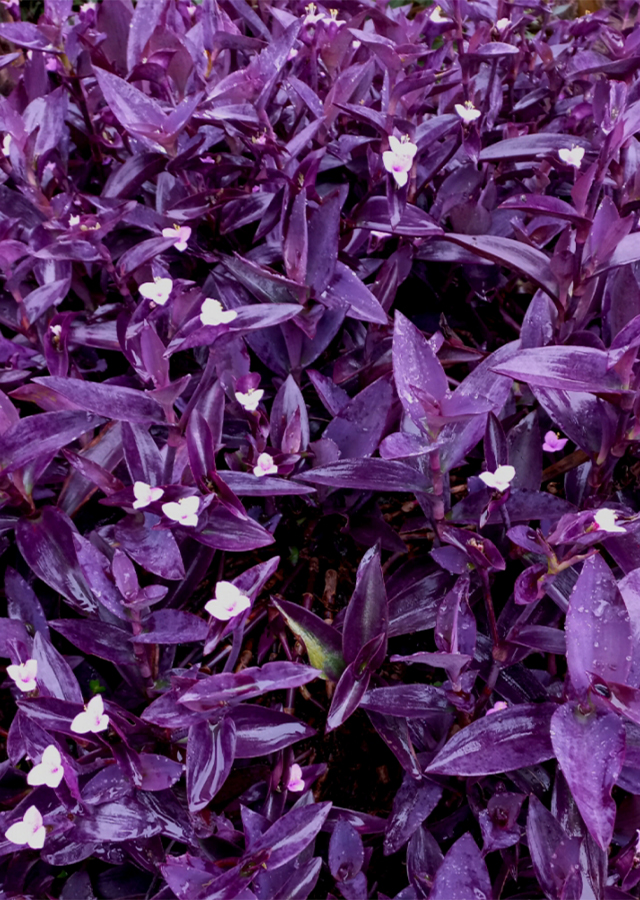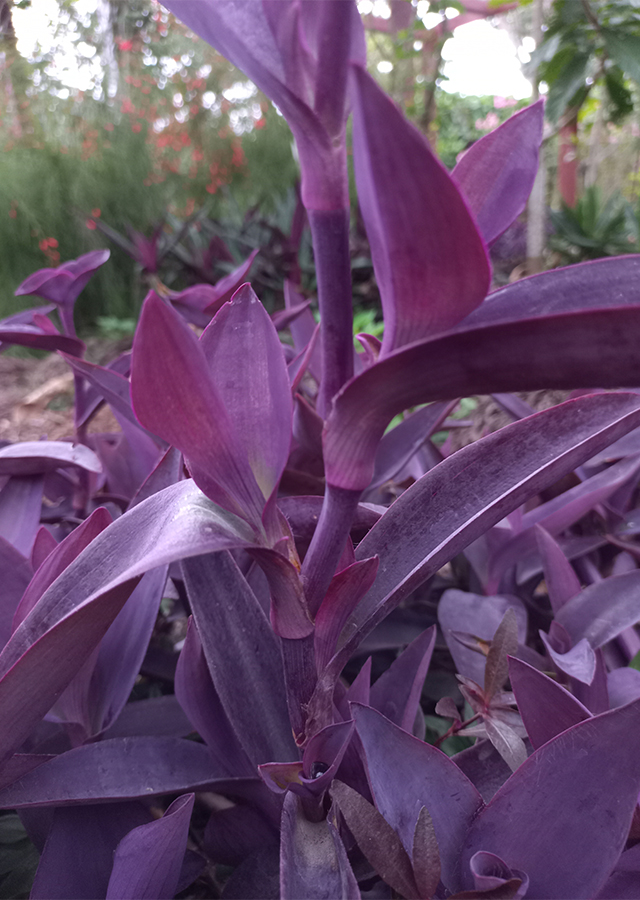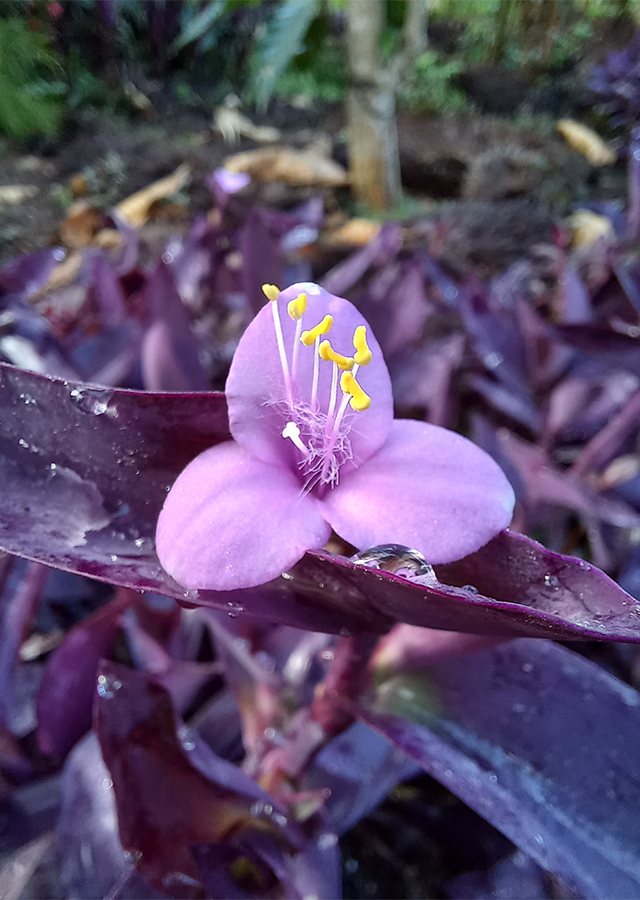Purple Heart
Tradescantia pallida (Rose) D.R.Hunt
Commelinaceae
Location in our garden
Principal



Synonym
Tradescantia striata Mottet
Tradescantia velutina L.Linden
Setcreasea jaumavensis Matuda
Habitus
Herbaceous. Perennial herb with elongate decumbent-ascending stems and sub-erect flowering branches
Part Used
Leaves
The Whole Plant
Growing Requirements
Full Sunshine
Need Shade
Drought Resistant
Habitat
Riverbanks
Forest
Coastal
Roadside
Shrublands
Terrestrial
Overview
T. pallida is native to Mexico. It is now widely grown as an ornamental and houseplant in many tropical and subtropical regions including North, Central and South America, the West Indies, South Africa, the Canary Islands, Madeira, and Myanmar. It is naturalized in the West Indies, Canary Islands, southeastern USA, Argentina, Nicaragua and Honduras. This plant is one of the ornamental plants that can be kept indoors, because it is considered effective for improving air quality by cleaning and filtering volatile pollutants from the air in the room. In addition, the purple heart plant also has good health benefits. Traditionally, purple heart is believed to improve blood circulation and act as an anti-inflammatory, antitoxic, and antioxidant supplement. In Malaysia, the Ayta people of Porac Pampanga use this plant to treat eye pain.
Vernacular Names
Purple heart tradescantia, Spider lily, Wandering jew (English), Amor de hombre, Morada, Niña en barca, Purpurina (Spanish), Cucaracha americana (Cuba), Cucaracha, Saprissa (Costa Rica), Cohitre morado (Puerto Rico).
Agroecology
T. pallida grows in tropical and subtropical areas with warm temperatures. Plants do not grow below 8-10 °C. The species is drought and heat tolerant, but it is damaged by frost and winter conditions. T. pallida grows in full sun to moderate shade in the floor of the understory, and it is adapted to grow in a wide variety of soils (clay loam, loam, sandy loam, sandy clay, and chalk) with pH ranging from 5 to 7.8. Mean annual rainfall 800-3.500 mm.
Morphology
- Stem - The stems and upper surfaces of the leaves are a deep royal purple that becomes suffused with a faint dusty turquoise-gunmetal undertone as the foliage grows older.
- Leaves - are sheaths clasping, 1-2.5 cm long, ciliate; blades oblong, 10-18 cm long, 2-3.5 cm broad, acute at apex, the upper one somewhat smaller. The undersides of the leaves are a vivid violet that shades towards pink where the petioles clasp and encircle the stem. Inflorescences are terminal and in upper leaf-axils, peduncles mostly 3-10 cm long.
- Flowers - in small densely cymose clusters subtended by 2 or 3 bracts, these similar to leaves but smaller; pedicels umbellate, up to 7 mm long, pilose toward apex. Sepals oblong, 8-10 mm long, petals pink to rose-purple, 15-20 mm long. Stamens 6, with 3 filaments epipetalous and 3 adherent to petal margins, glabrous or variably pubescent.
- Fruits - are glabrous capsules, 3.5 mm.
- Seeds - are very small, 2.5-3 mm.
Cultivation
It can be easily propagated by cuttings and by plant fragments that rapidly colonize areas where it grows.
Chemical Constituents
Anthocyanins, flavonoids, tannins, steroids.
Traditional Medicinal Uses
Plant used for sore eyes, to improve circulation and as anti-inflammatory, antioxcidant, and antitoxic.
Part Used
Reference Sources
- CAB International. 2021. Invasive Species Compendium: Tradescantia pallida (purple queen). https://www.cabi.org/isc/datasheet/117574#tosummaryOfInvasiveness. 27-12-2021.
- Stuartxchange. 2018. Philippine Medicinal Plants: Purple heart. http://www.stuartxchange.org/PurpleHeart. 27-12-2021.
- Flora Fauna Web. 2019. Tradescantia pallida (Rose) D.R.Hunt. https://www.nparks.gov.sg/florafaunaweb/flora/2/5/2521. 27-12-2021.

